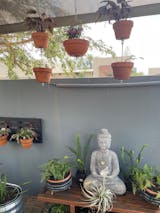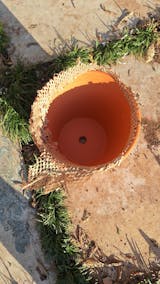
Thing To Know Before You Grow Summer Bulbs

Now that your garden is flourishing with the beautiful blooms of spring bulbs, it's the perfect time to plan for a colourful summer with bulbs that are planted in spring. This will fill your garden with colour all summer long and in some instances, even into autumn. So, as the spring flowers fade, keep the flower party going with the Things to Know Before You Grow Summer Bulbs.

The Differences Between Summer and Winter Bulbs
You might be wondering, do summer bulbs have a different life story compared to their winter cousins? Well, yes, they do. For starters, they thrive in different seasons and have their own schedules for taking naps, also known as dormancy. Unlike autumn-planted bulbs, summer bulbs don't need a long, chilly dormancy period. Many of them originally hailed from subtropical regions, like parts of our country and South America. That’s why they’re called ‘tender’ bulbs—they prefer warm weather and a bit of humidity. They will start popping up once the soil gets nice and toasty. Since they are used to these cosy conditions, it’s crucial to wait until the risk of last-minute frosts has passed before you plant them. You may be excited to get them in the ground, but don’t jump the gun and plant them too early.
Things to Know Before You Grow Summer Bulbs
Then, it's also a matter of soil type. In less severe winter conditions, a dahlia growing in a more sandy soil can survive the winter, but won’t deal with being waterlogged in clay soil. Bear in mind though, that whichever bulbs you’re growing, and whether they’re in containers or in the garden, watering is something that mustn’t be left out. All bulbs need adequate water while they’re growing, as well as for the foliage period of six weeks after they have finished flowering. It is essential to start watering as soon as your bulbs are planted, because if the bulbs are lacking water they may fail to flower. Even though no foliage is showing, bulbs are as busy as bees, and exciting activity is taking place underground. The bulb establishes itself by putting out its root system – and for this it needs moisture. It is best to water bulbs with a sprinkler for 15 minutes every 4-5 days if the sky isn’t doing a rain dance, and make sure to add a layer of mulch to the soil to help retain moisture.
If your bulbs are planted amongst ground covers, be extra vigilant about water as there is more competition for available moisture. This is also true if your bulbs are in containers as the moisture in pots dries out quickly and may need topping up every day or two.

The Different Stages of Bulbs
Whichever of the bulbs’ you’re planting out, bear in mind that their lifecycle can be broken down into dormancy, rooting, sprouting, active growth, flowering and recharging.
During the vegetative stage, the bulb will grow to maturity, reaching flowering size (just remember each plant is unique and will grow at their own pace). Then, when the plant gets there, it will enter the reproduction phase, when the plant will flower, reproduce itself either through seeds or making more bulbs below ground, perpetuating its lifecycle. Many bulbs have adapted to being planted in different conditions than they were originally found, as well as handling other harsh or seasonal environments with a dormant period in their lifecycle, cleverly storing water and energy in an underground structure.
You can't plant bulbs today and expect blooms tomorrow. There's always a few months of waiting between planting and enjoying the flowers. This downtime is essential for the bulb—whether it's a bulb, corm, or rhizome—to develop the flowers and leaves already tucked away in its structure. Patience is key; the best things come to those who wait!
Leave the Leaves!
Before you start digging up your spring bulbs to make way for your summer stars, remember that the ones looking a bit tired but still hanging on to their leaves need a little more time to recharge for next season. We know you’re eager to clear those garden beds or pots, wishing those daffodil leaves would just hurry up and vanish—but wait! Leave the leaves alone! We get so caught up in the flowers that we forget the real magic is happening underground. Picture yourself with x-ray vision, peering into the soil—what do you see? The bulbs, of course! They’re the real stars, storing energy and nutrients, masterminding the whole flowering, recharging, and dormancy process. The true rest and recovery for a bulb comes after its big floral performance, when it dies back, and this needs to be done with care. The bulb has spent all its energy blooming and now needs to stock up for next year’s show. So, give those leaves a little more time—they’re hard at work preparing for the next season of blooming!
Post-flowering Care
Whether your plant will make a comeback next season depends largely on how you handle the leaves after the plant has finished flowering. This is actually the most crucial time to feed your plant! Those leaves that hang around post-flowering are in the recharging phase—the most critical stage for the plant’s health (even though we’re usually more excited about the flowers themselves!). If you cut the leaves too soon, you are forcing the bulb to make some tough sacrifices—starting with the next season’s flowers. So, let the leaves die back naturally after the blooms have faded. A little patience goes a long way, or you can plant around them until the leaves have turned brown and completed their all-important job. From planting time you can treat your bulbs to regular feedings of Hadeco Bulb Food or similar, but it is especially important post-flowering.
Ready to make your summer one to remember? Shop our vibrant selection of summer bulbs.
Happy gardening!
If you’d like to read about winter and spring flowering bulbs this blog is for you: The Life and Times of Winter Bulbs.


September
20 - 21,
2025





Leave a comment